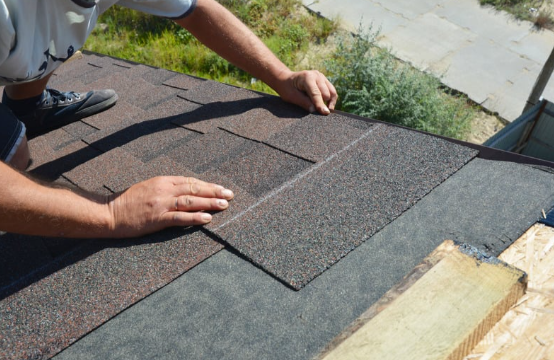A sound roof is the unsung guardian of a home, shielding it from the elements. Over time, wear and tear become inevitable, questioning the necessity of roof replacement. Beyond mere aesthetics, a roof’s structural integrity impacts the entire house. Options abound, ranging from basic repairs to complete overhauls.
Pros promise enhanced durability, improved energy efficiency, and increased property value. However, the decision is not without cons – the financial investment and disruption to daily life loom large. The quest for a weatherproof sanctuary necessitates careful consideration, weighing the cost against the long-term benefits, making roof replacement a pivotal homeowner dilemma.
Signs for Roof Replacement
- Age of the Roof
Understanding the age of your roof is a fundamental aspect in gauging its performance and the potential need for replacement. Roofs, depending on the materials used, generally have a lifespan ranging from 20 to 30 years. If your roof is approaching or has surpassed this timeframe, it becomes crucial to consider replacement. An aging roof may exhibit signs of wear and tear, diminishing its effectiveness in protecting your home from the elements.
- Visible Damage
Visual inspection is paramount in identifying visible damage that may necessitate roof replacement. Look for cracked or missing shingles, as these compromise the roof’s ability to provide a robust barrier against weather conditions. Sagging areas or water stains on your ceiling indicate potential structural issues, and homeowners are urged to address these concerns promptly. Recognizing visible damage early on can prevent further deterioration and protect the interior of your home.
- Persistent Leaks
Persistent leaks are a clear indication that your roof requires attention. Even after attempts at repair, if leaks persist, it points to underlying issues that demand a comprehensive solution. Addressing leaks promptly is essential, as water damage can lead to mold growth, compromising your household’s health and further deteriorating your home’s structural integrity. In such cases, opting for roof replacement might be the most effective and lasting resolution.
Roof Replacement Options
- Material Choices
Selecting the right roofing material is a pivotal decision in the replacement process. Various options cater to different preferences, budgets, and climates. Asphalt shingles, commonly chosen for their cost-effectiveness, provide reliable performance. Alternatively, metal roofs offer enhanced durability, making them suitable for areas prone to severe weather conditions. Evaluating the pros and cons of each material ensures that your replacement aligns with your budget and your region’s climate.
- Full or Partial Replacement
Determining whether a full or partial replacement is necessary depends on the extent of your roof’s issues. While a full replacement provides a comprehensive solution, addressing all potential problems, partial replacement might be a viable and cost-effective option in specific situations. Understanding the specific issues your roof faces is crucial in making an informed decision on the scope of the replacement project.
- DIY vs. Hiring a Roofing Contractor
The decision between a do-it-yourself (DIY) approach and hiring a professional roofing contractor hinges on factors such as expertise, safety, and adherence to building codes. While some homeowners may choose a DIY route to cut costs, roofing projects demand specialized knowledge. Hiring a reputable roofing contractor ensures the work is executed professionally, in compliance with building regulations, and often with warranties on the labor and materials.
Pros of Roof Replacement
- Enhanced Energy Efficiency
Investing in a roof replacement can contribute to enhanced energy efficiency within your home. Modern roofing materials often come with improved insulation properties, reducing heat transfer and lowering utility bills. Consideration of energy-efficient options during the replacement process is not only environmentally responsible but also financially beneficial in the long run.
- Increased Property Value
A new roof can significantly enhance your home’s curb appeal, thereby increasing its overall value. Potential buyers are more likely to be attracted to a property with a well-maintained and visually appealing roof. While the initial cost of replacement may seem substantial, the boost in property value makes it a worthwhile investment.
- Improved Safety
A structurally sound roof is paramount for ensuring your family’s safety and protecting your belongings. A compromised roof can lead to collapses or leaks, posing potential hazards. Investing in a roof replacement guarantees the structural integrity of your home, enhancing safety and peace of mind for you and your loved ones.
Cons of Roof Replacement
- Cost
The cost associated with roof replacement is a significant consideration for homeowners. While the initial investment may seem substantial, it’s essential to view it as a long-term investment in the durability and value of your home. Assessing the overall benefits and potential savings on future repairs justifies the upfront expense of a roof replacement.
- Disruption
The replacement process can cause temporary disruptions to your daily life. Understanding the timeline and planning accordingly can help mitigate inconveniences. Communication with your roofing contractor to establish a clear schedule and expectations is crucial in minimizing disruptions and ensuring a smoother replacement process.
- Environmental Impact
Disposing of old roofing materials responsibly is essential to minimize the environmental impact of a replacement project. Consideration of eco-friendly options during the replacement process, such as recyclable materials, contributes to sustainability. Homeowners should prioritize environmentally conscious choices to reduce the ecological footprint associated with roof replacement.
Conclusion
Roof replacement is a substantial decision with long-term implications for your home. Assessing the signs, exploring options, and understanding the pros and cons are crucial steps in ensuring a successful and beneficial replacement. When considering a roof replacement, consulting with a professional roofing contractor can provide valuable insights tailored to your specific situation.







